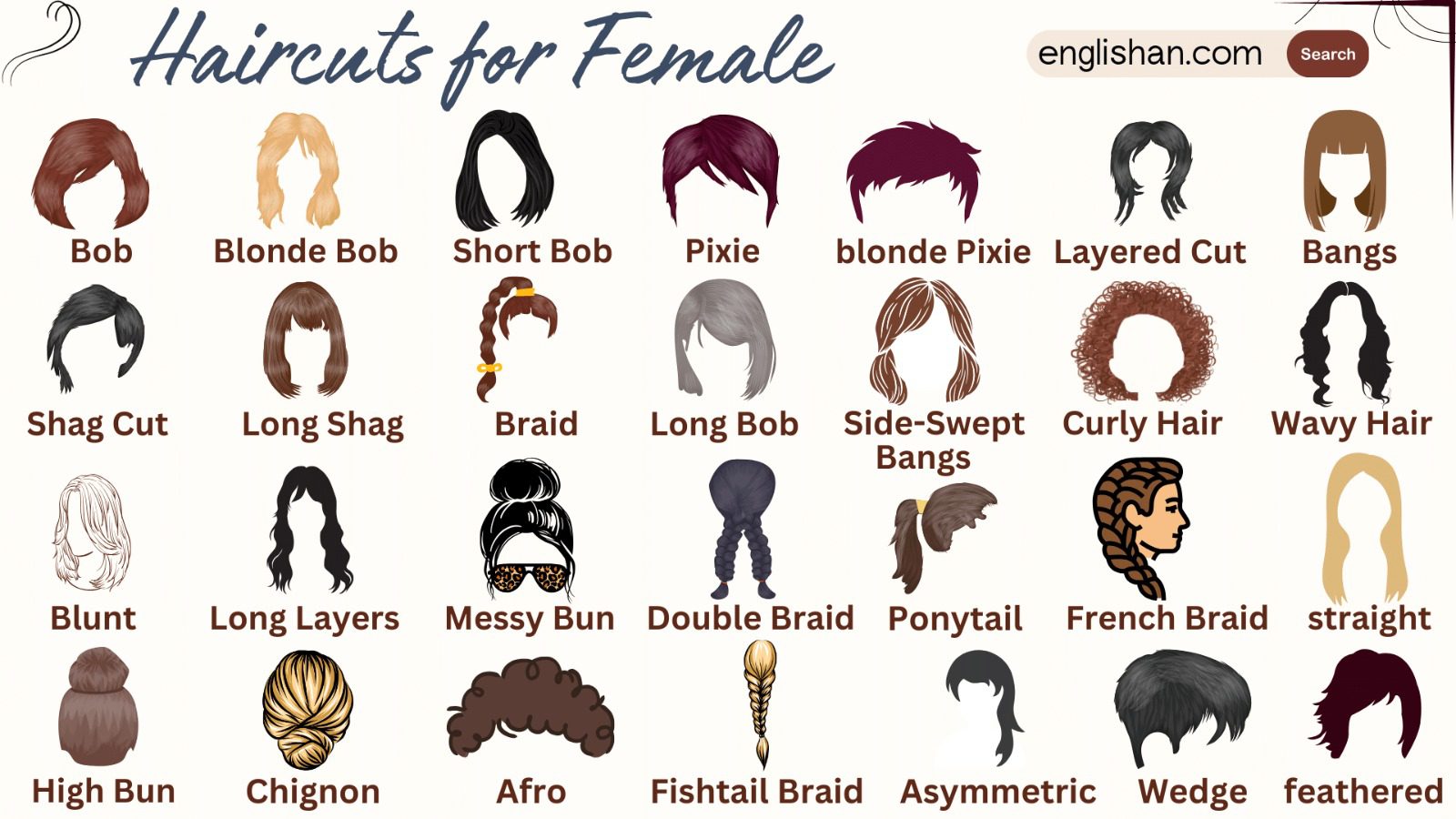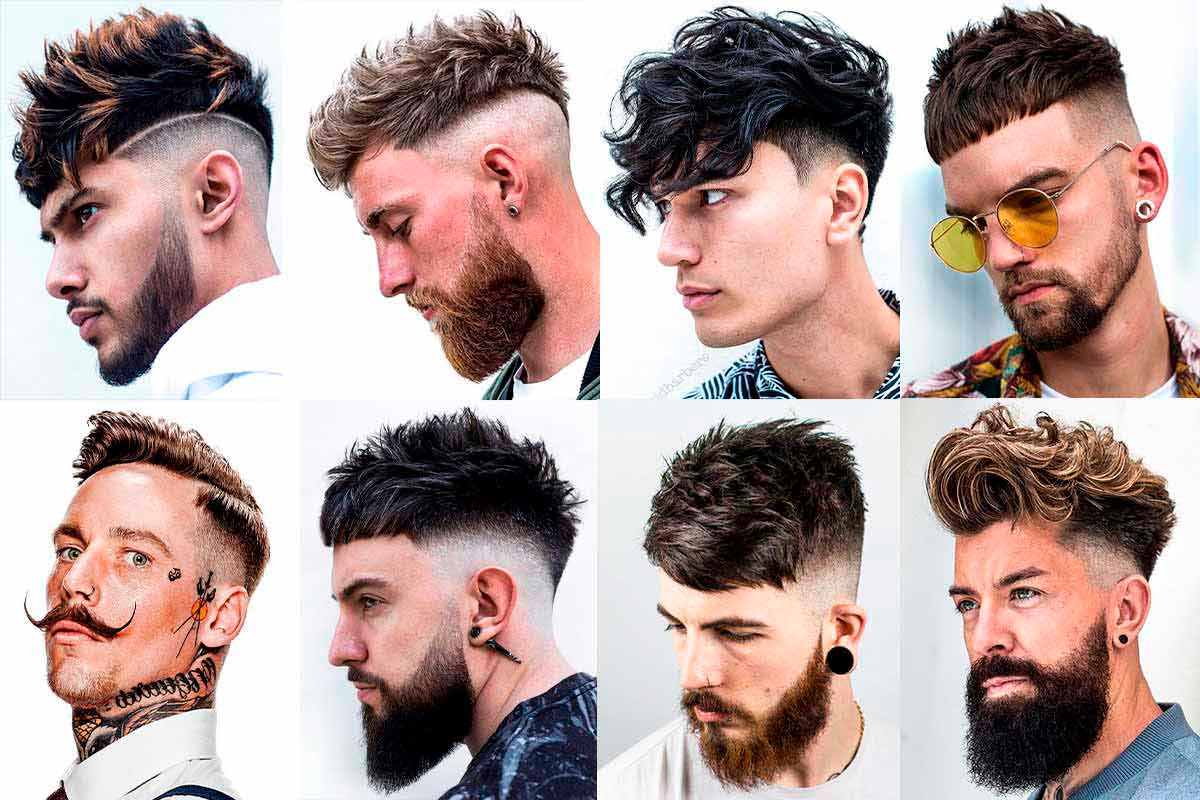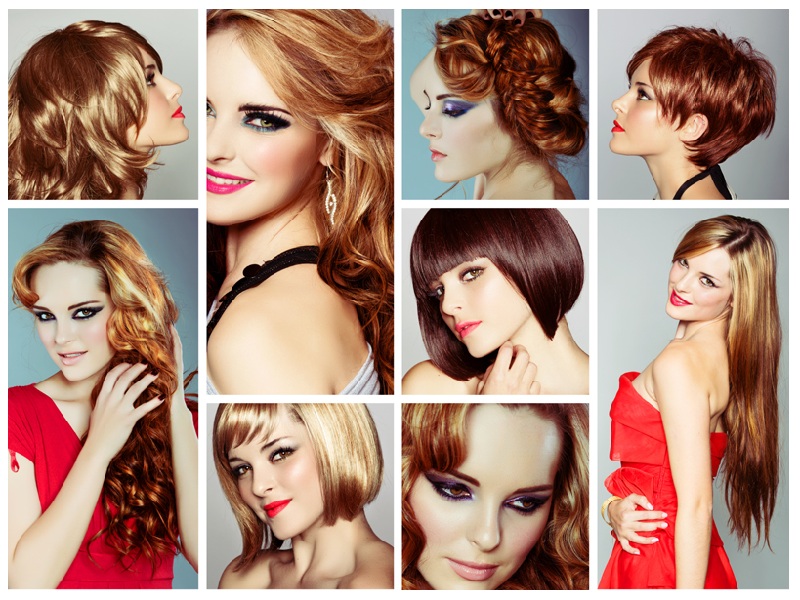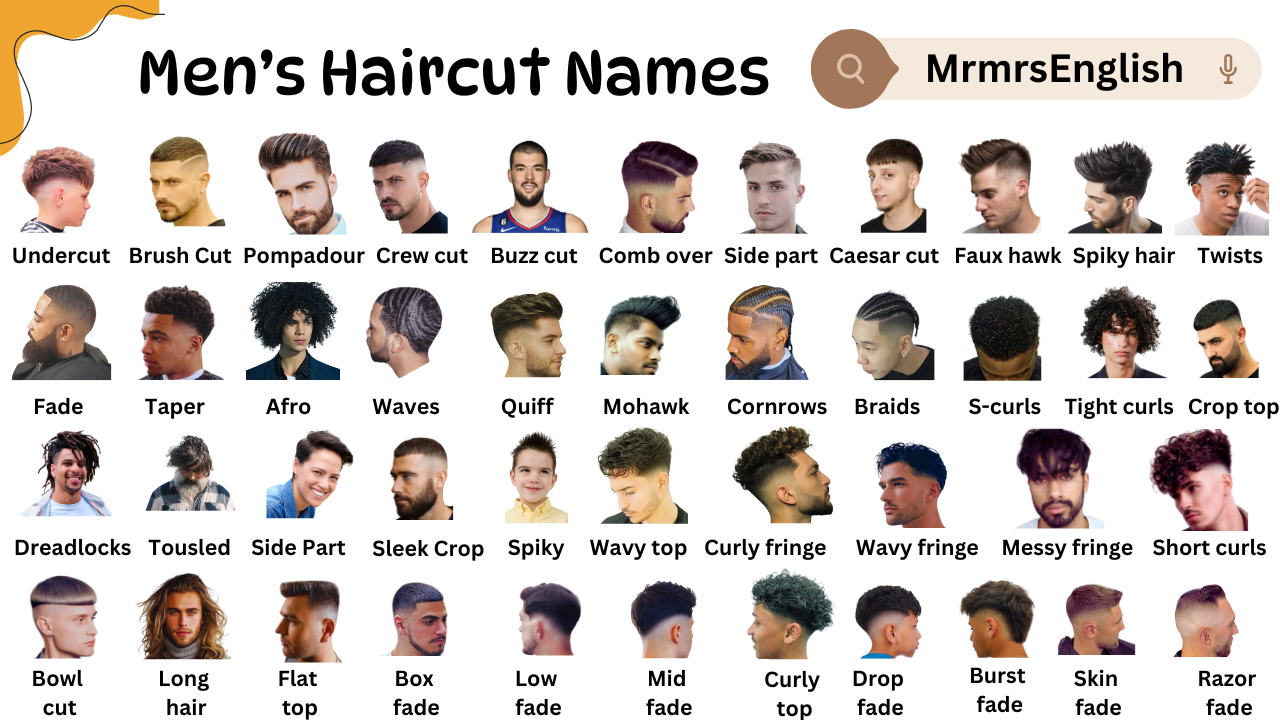What type of hairstyles are there

The realm of personal grooming and self-expression is profoundly influenced by the art of hairstyling. Hair, often considered a crowning glory, serves as a versatile canvas for individuals to convey personality, status, and cultural identity. The sheer diversity of hair textures, lengths, and historical influences has given rise to an expansive catalog of hairstyles, each possessing unique characteristics and aesthetic appeals. Understanding the various categories and specific iterations within hairstyling provides insight into the intricate relationship between hair, fashion, and individual expression. This exploration delves into the vast array of available styles, elucidating their defining features and the broader significance they hold within contemporary society.
Short Hairstyles: Precision and Edge
Short hairstyles are characterized by their minimal length, often accentuating facial features and offering practical benefits such as reduced styling time and maintenance. These styles project an aura of confidence and modernity.
- The Pixie Cut: A classic short style, the pixie is typically cut short on the back and sides, with a slightly longer top. Its variations include elongated fringes, textured layers, or a more uniform, closely cropped look. The pixie is celebrated for its chic appearance and ease of care.
- The Bob: While often associated with medium length, the bob can be significantly shortened, reaching jawline or chin level. A “cropped bob” or “micro bob” maintains the clean lines of a traditional bob but with a more dramatic, shorter finish. It can be blunt, layered, or asymmetrical.
- The Undercut: This style features a stark contrast between very short or shaved hair on the sides and back, and longer hair on top. The longer section can be styled in various ways, such as slicked back, swept to the side, or left voluminous. It offers a bold, contemporary aesthetic.
- The Buzz Cut: The most extreme short style, the buzz cut involves uniform hair length across the entire head, achieved with clippers. It is low-maintenance and conveys a minimalist, assertive image. Variations include different guard lengths and subtle fades.
- The Crew Cut: Similar to a buzz cut but with a slightly longer top that gradually shortens towards the back and sides. It is a neat, classic style often favored for its clean lines and professional appearance.
- The Crop Top: Featuring short, often textured hair on top with a blunt fringe and faded or tapered sides and back. This style is modern and often paired with an undercut or fade for a sharp look.
Medium Hairstyles: Versatility and Balance
Medium-length hairstyles strike a balance between the practicality of short cuts and the styling potential of long hair. They offer significant versatility, allowing for various updos, half-up styles, and natural flows.
- The Lob (Long Bob): An extended version of the classic bob, the lob typically falls between the chin and collarbone. It retains the bob’s sophisticated structure but provides more length for movement and styling variations, such as waves or subtle layers.
- Layered Cuts: Incorporating different hair lengths throughout the style, layers add volume, movement, and texture. They can be subtle, face-framing, or dramatic, removing weight from thicker hair or adding body to finer strands.
- The Shag: A retro-inspired style characterized by choppy layers, Star Wars Hairstyles And How To Do Them often accompanied by bangs. The shag creates a disheveled, rock-and-roll aesthetic, emphasizing texture and movement.
- Blunt Cut: A style where all hair is cut to the same length at the bottom, creating a sharp, precise line. This cut often makes hair appear thicker and fuller.
- Curtain Bangs: A popular fringe style where bangs are parted down the middle and swept to the sides, framing the face. They can be incorporated into various medium and long hairstyles, offering a soft, elegant touch.
- The Wolf Cut: A modern, edgy style combining elements of the shag and the mullet. It features choppy layers, often shorter at the top and longer at the back, creating a wild, textured appearance.
Long Hairstyles: Elegance and Expression
Long hair offers the most extensive range of styling options, allowing for elaborate updos, intricate braids, and dramatic flowing styles. It is often associated with femininity, romance, and artistic expression.
- Straight and Sleek: Characterized by smooth, untextured hair, often achieved through heat styling or chemical straightening. This style exudes sophistication and polish.
- Wavy Hair: Ranges from loose, natural waves to defined beach waves, often enhanced with styling products or heat tools. Wavy styles convey a relaxed, natural beauty.
- Curly Hair: Emphasizes natural curls, which can range from loose ringlets to tight coils. Styling focuses on defining and maintaining curl patterns, often using moisturizing products.
- Braids: A vast category encompassing numerous techniques.
- French Braid: Hair is divided into three sections, and new sections are continuously added from the sides as the braid progresses down the head.
- Dutch Braid: Similar to a French braid, but the strands are crossed under each other, creating a raised, inverted effect.
- Cornrows: Braids that lie flat against the scalp, typically in straight lines or intricate patterns.
- Box Braids: Individual braids created by sectioning hair into square or box-like parts. These are a popular protective style.
- Fishtail Braid: Created by taking small sections of hair from the outer edges and crossing them over to the opposite side, resulting in a delicate, intricate pattern.
- Ponytails: A simple yet versatile style where hair is gathered and secured at the back of the head. Variations include high, low, side, braided, Shoulder Length Hairstyles For Thin Wavy Hair A Comprehensive Guide To Enhancing Volume And Texture or bubble ponytails.
- Buns: Hair is gathered and coiled into a knot, often secured at the nape of the neck, crown, or side. Examples include the sleek ballet bun, messy bun, or top knot.
- Updos: A broad term for styles where hair is arranged upwards and secured away from the neck. This includes chignons, French twists, bouffants, and elaborate formal styles.
Textured and Protective Styles: Celebrating Natural Hair
For individuals with naturally curly, coily, or kinky hair, a unique array of styles focuses on celebrating natural texture or protecting the hair from damage.
- Afro: A voluminous, rounded style that allows natural curly or coily hair to stand out from the head. It is a symbol of natural beauty and cultural pride.
- Dreadlocks (Locs): Formed by matting and intertwining hair strands into ropes. Locs can be cultivated in various sizes and lengths, offering a low-maintenance and culturally significant style.
- Twists: Created by twisting two sections of hair around each other. These can be two-strand twists, flat twists (against the scalp), or Senegalese twists (using extensions).
- Braids (as protective styles): Box braids, cornrows, micro braids, and tree braids, often incorporating hair extensions, serve to protect natural hair from environmental stressors and manipulation.
- Wigs and Weaves: These involve attaching hair (synthetic or human) to the natural hair or scalp. They offer versatility in changing styles, colors, and lengths without altering natural hair, and can also serve as protective styles.
- Perms and Relaxers: Chemical treatments that alter the hair’s natural texture. Perms create curls or waves, while relaxers straighten curly or coily hair. These are permanent changes requiring specific maintenance.
Haircut Techniques and Features
Beyond specific styles, various techniques contribute to the final look:
- Fades and Tapers: Haircutting techniques where the hair gradually changes length from very short at the bottom to longer at the top. Fades involve a more drastic transition, often down to the skin, while tapers are subtler.
- Bangs (Fringe): Sections of hair cut to fall over the forehead. Types include blunt bangs, wispy bangs, side-swept bangs, and the aforementioned curtain bangs.
- Asymmetry: Styles where one side of the hair is longer than the other, creating an unbalanced yet artistic look.
The Importance of Hairstyle Selection
The selection of a hairstyle is a deeply personal decision influenced by various factors, including hair texture, face shape, lifestyle, professional requirements, and personal aesthetic preferences. A well-chosen hairstyle can enhance facial features, complement an individual’s personal brand, and contribute significantly to self-confidence. Furthermore, hairstyles often carry cultural, historical, and social significance, serving as powerful non-verbal communicators. The continuous evolution of fashion and beauty trends ensures that the array of available hairstyles remains dynamic, offering endless possibilities for personal expression.
FAQs
How does hair texture influence styling choices?
Hair texture significantly dictates how a style will look and behave. Straight hair may hold curls differently than naturally curly hair, and fine hair requires different layering techniques than thick hair to achieve volume or manageability. Understanding natural texture is fundamental to selecting a style that is both flattering and sustainable.
Are certain hairstyles more suitable for specific face shapes?
Indeed, some hairstyles are known to complement particular face shapes by balancing proportions or accentuating desirable features. For instance, styles with volume at the crown can elongate a round face, while bangs can soften a high forehead. A professional stylist can provide personalized recommendations based on an individual’s unique facial structure.
What constitutes a protective hairstyle?
Protective hairstyles are designed to minimize manipulation and exposure of natural hair to environmental elements, thereby promoting hair health and growth. These styles often involve braiding, twisting, or locing the hair, sometimes with the addition of extensions, to keep ends tucked away and reduce breakage.
How frequently should hair be trimmed to maintain a style?
The frequency of trims depends on the specific hairstyle and hair growth rate. Short, precise cuts like bobs or pixies typically require trims every 4-6 weeks to maintain their shape. Longer, layered styles may only need trimming every 8-12 weeks to remove split ends and preserve the style’s integrity.
Tips
Consultation with a professional stylist is highly recommended prior to a significant style change. Experienced stylists possess the expertise to assess hair type, texture, and face shape, providing informed guidance on styles that best suit individual characteristics and lifestyle.
Regular hair care, including appropriate washing, conditioning, and treatment routines, is essential for maintaining hair health and the longevity of any hairstyle. Utilizing products specifically formulated for hair type and concerns contributes significantly to overall hair vitality and appearance.
Experimentation with different styling products and techniques can unlock new possibilities within an existing hairstyle. Heat protectants, volumizing mousses, texturizing sprays, and hold gels each offer unique benefits that can transform a look without requiring a new cut.
Consideration of lifestyle and daily routine is crucial when selecting a hairstyle. A demanding schedule may benefit from a low-maintenance style, while more time for styling allows for intricate or high-upkeep options. Practicality should always be weighed against aesthetic appeal.
Conclusion
The exploration of hairstyles reveals an expansive and diverse landscape of aesthetic possibilities. From the precise lines of short cuts to the flowing elegance of long tresses, and the intricate artistry of textured and protective styles, each category offers unique avenues for personal expression. Hairstyles are more than mere aesthetic choices; they are reflections of cultural heritage, personal identity, and evolving fashion sensibilities. The continuous innovation in cutting techniques, styling methods, and product development ensures that the world of hair remains dynamic, providing individuals with endless opportunities to redefine their image and communicate their individuality through the powerful medium of hair. Understanding this vast array empowers individuals to make informed choices that not only enhance their appearance but also align with their personal and professional narratives.







More suggestion: White Hair Hairstyles For Men Embracing The Silver Aesthetic With Confidence